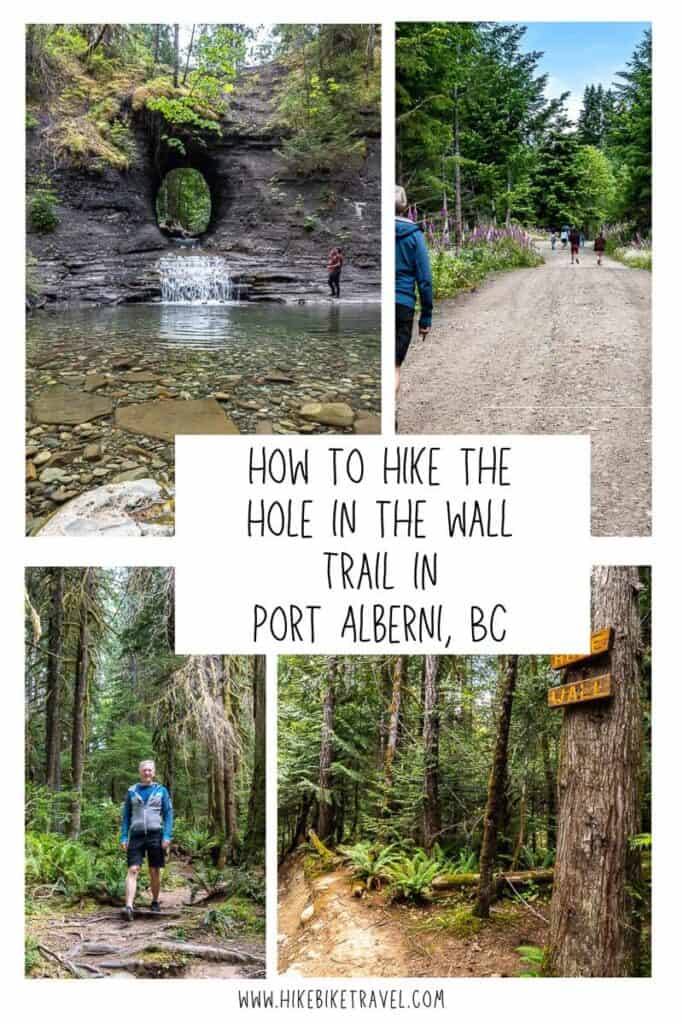Table of Contents
For a short, one-of-a-kind hike when you’re driving between Nanaimo and Tofino, you’d do well to stop for 30 minutes and check out the Hole in the Wall trail in Port Alberni. I’d tried to do the trail a few years earlier but had a heck of a time finding the trailhead and gave up. On my most recent visit to Vancouver Island I was determined to make it happen – and did.
Why is the hike to the Hole in the Wall so compelling? I think all of us who see a photo of water spilling out of a giant hole in a rock feel the need to see it in person. And the fact that the hike is easy means that it’s accessible to all ages including young families.
Unfortunately, getting to the trailhead on the far side of a busy highway is downright dangerous as the line of sight is very short – and the cars are going quickly and not expecting people to be crossing the highway. Signage and a flashing crosswalk sign would make this area so much safer. If you decide to do the hike, be EXTRA cautious crossing the highway.
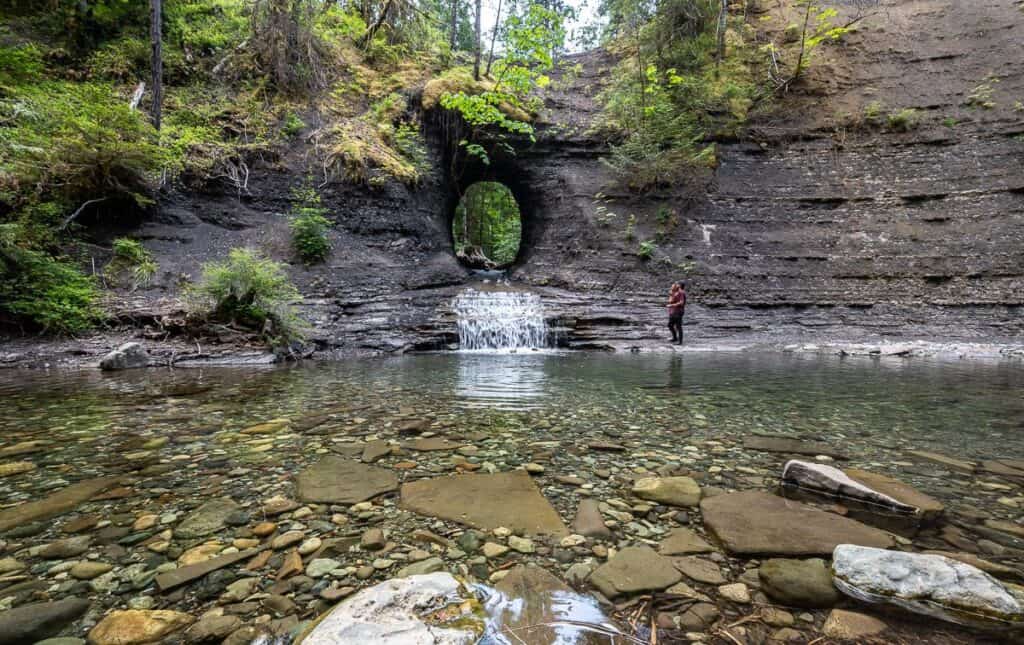 The Hole in the Wall was way cooler to see than I expected
The Hole in the Wall was way cooler to see than I expected
Where is the Hole in the Wall Trail?
You’ll find the Hole in the Wall trail about 6.5 km north of downtown Port Alberni across the highway from Coombs Country Candy. There is no sign pointing to it that I could see – and it’s not obvious from the highway, unless you happen to see people starting to hike.
Location on Google maps
Where can you park?
There are a couple of places to park, and neither are great because of the highway.
There is a small pullout or verge with room for about three cars on the south side of Highway 4 about 100 metres east of the turnoff to Coombs Country Candy IF you’re driving east. From there, it’s easy to access the trail – and it’s safer as you don’t need to cross the highway.
There is another big parking lot near Coombs Country Candy that is easy to access. However, if you park here, you’ll have to cross the highway – which is busy and not very safe, especially if you’re group includes young kids or people that can’t run quickly. That’s what we did – and just waited for a good break in the traffic.
To get to the large parking lot turn into Coombs Country Candy. Then immediately take the first dirt road on your right and turn in again to an obvious parking lot. It’s free to park here. Please don’t park in the Coombs Country Candy lot.
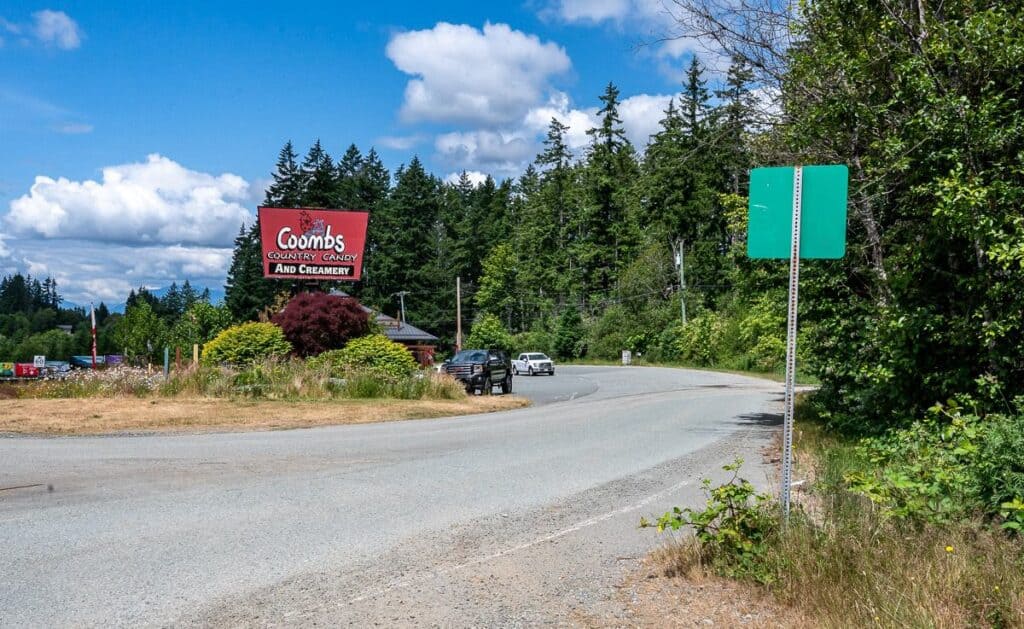 To find parking for the Hole in the Wall hike turn in as though you were going to Coombs Country Candy
To find parking for the Hole in the Wall hike turn in as though you were going to Coombs Country Candy  Take a right off the paved road and you’ll find this large parking lot across the highway from the trailhead
Take a right off the paved road and you’ll find this large parking lot across the highway from the trailhead
Finding the trailhead – the crux of the hike
Everyone we saw started the hike on the unmarked trail on the south side of Highway 4 across from Coombs Country Candy. You drop down into the woods within seconds, and you’ll see this tree with red paint splotches.
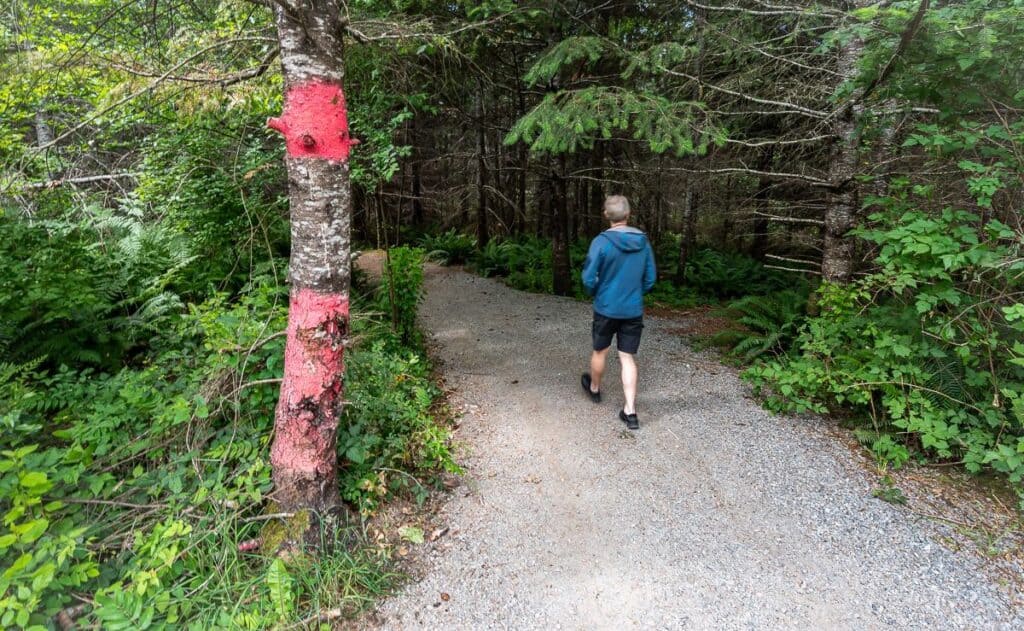 Take this unsigned trail after crossing Highway 4 to the Hole in the Wall
Take this unsigned trail after crossing Highway 4 to the Hole in the Wall
Hole in the Wall Hike Details
Distance: About 2.0 km return
Time needed: 30 minutes, more if you choose to hang out by the water.
Elevation gain: Minimal – somewhere between 35 – 50 metres (115 feet to 164 feet)
Level of difficulty: Easy, though the steep gravel section of road and trail can be slippery with small stones and after a rain parts of the trail can be muddy.
Dogs: Allowed but keep them on a leash.
When to visit: For the best experience you want the water to be flowing through the Hole in the Wall, not trickling the way it can in summer, especially when the large stump you can see in the photograph creates a small dam as the water level drops. Aim to visit in late fall, winter, or early spring for the best experience.
Facilities: None.
Please: Practice the seven Leave No Trace principles when visiting.
Signage: One sign a few minutes before you arrive at the Hole in the Wall was all that I saw.
Optional add-ons to the hike: From the same trailhead you can access Roger Creek Falls and the Alberni Valley Lookout. If you continue east for another minute on the highway, you’ll reach the trailhead for Stoke Creek Falls.
Safety notes: Consider carrying bear spray, especially if there’s no one around as black bear sightings are always a possibility.
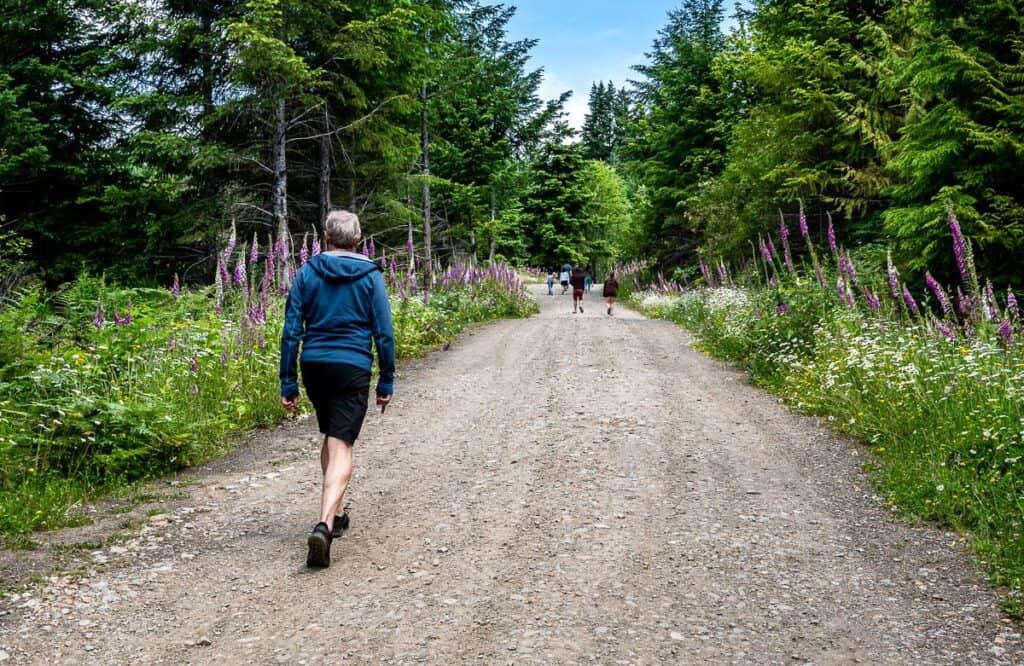 Retracing our steps to the car
Retracing our steps to the car
Description of the hike
The Hole in the Wall trail is not an official trail though you wouldn’t know it by the number of people hiking it. The trail is easy to follow when you know what you’re doing, but there are a couple of intersections where you could mess up.
Start by walking through the woods to a large open area. Take a right and head downhill along a wildflower-lined road. Continue, staying left at the next intersection and again at the intersection sporting a Hole in the Wall sign.
The last part of the hike includes a steep downhill to Roger’s Creek on uneven terrain but it doesn’t last long. In no time you’ll arrive at the creek. The first view you get with the ugly concrete block isn’t the best but move away from that area and you’ll enjoy big trees, interesting rocks, and the ever so cool looking Hole in the Rock.
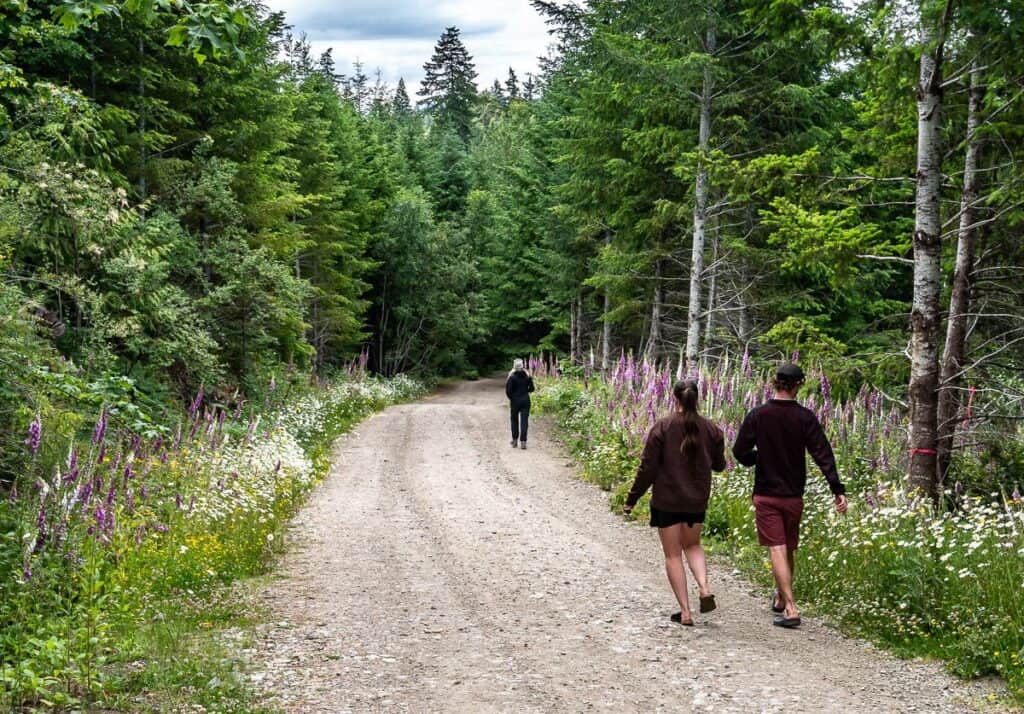 Head down a wildflower-lined road when you emerge from the woods
Head down a wildflower-lined road when you emerge from the woods 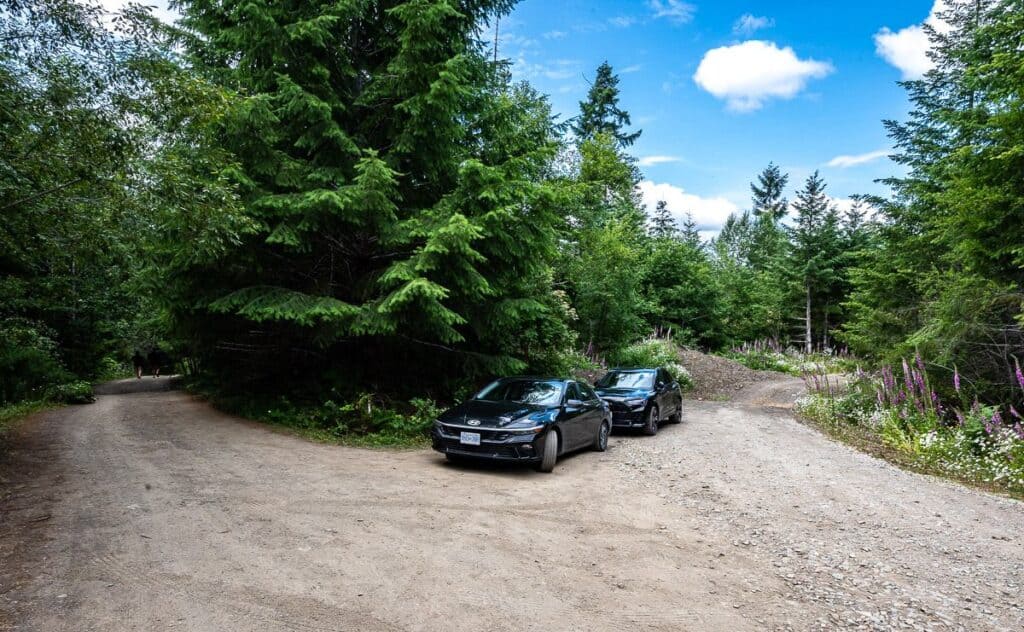 We didn’t see any signage here but keep to the left when you see this intersection
We didn’t see any signage here but keep to the left when you see this intersection 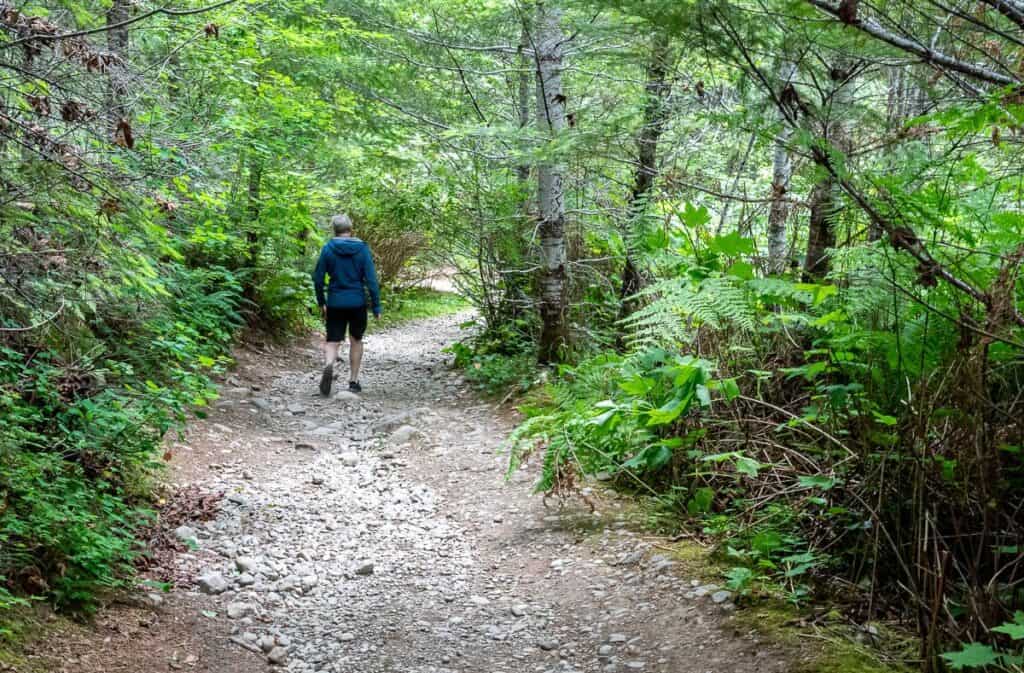 Descend through the forest on a slightly rougher trail
Descend through the forest on a slightly rougher trail 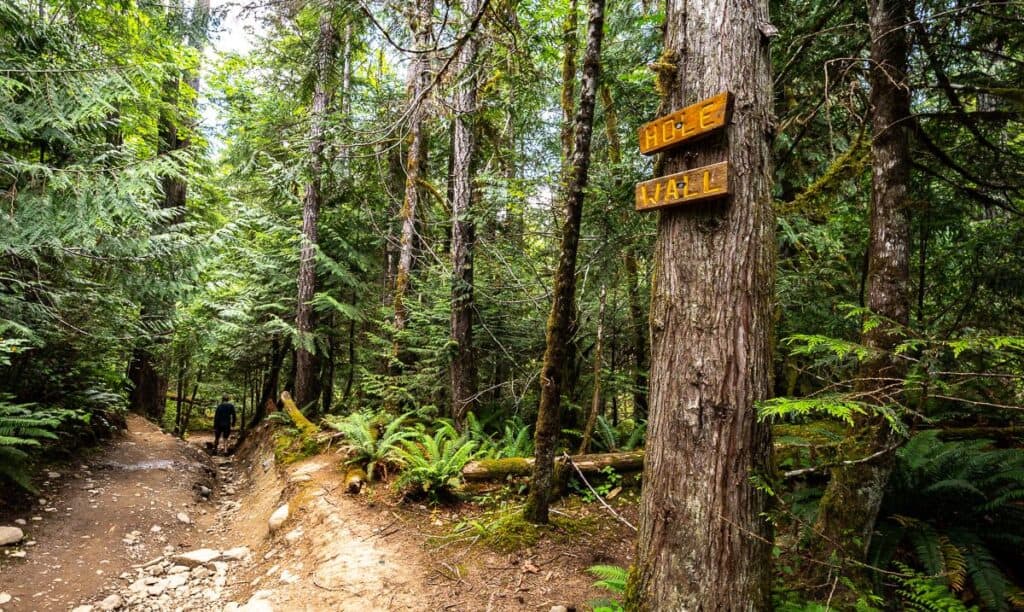 The one Hole in the Wall sign we saw near the end of the trail
The one Hole in the Wall sign we saw near the end of the trail 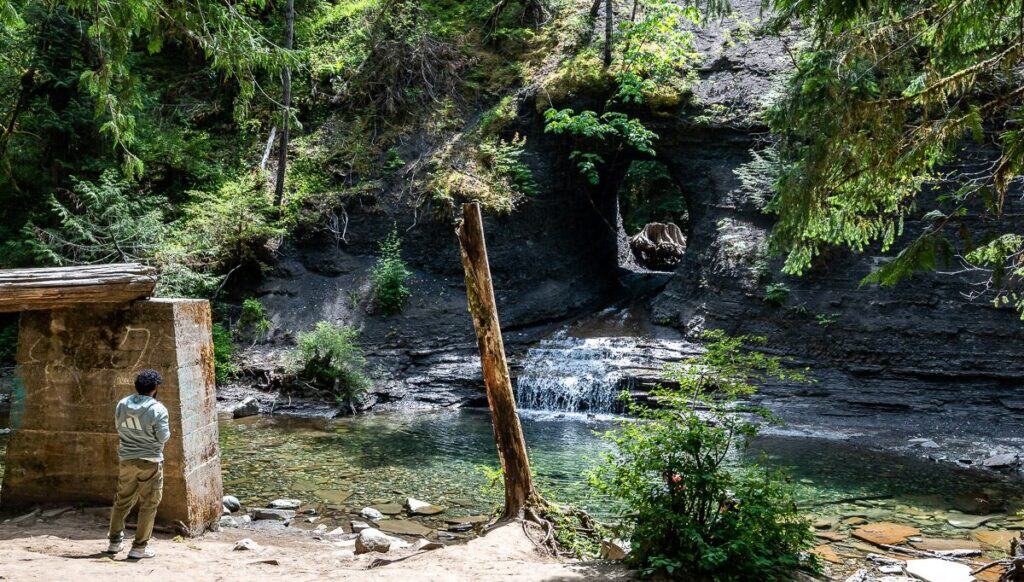 The less attractive view of the Hole in the Wall when you first arrive
The less attractive view of the Hole in the Wall when you first arrive 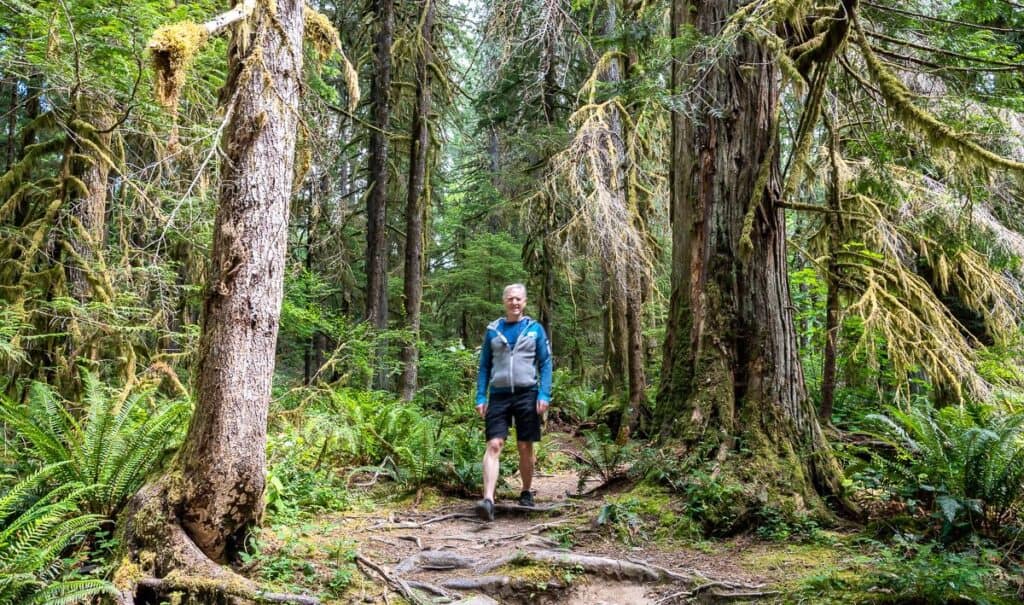 There are some good sized trees on trails by the Hole in the Wall
There are some good sized trees on trails by the Hole in the Wall 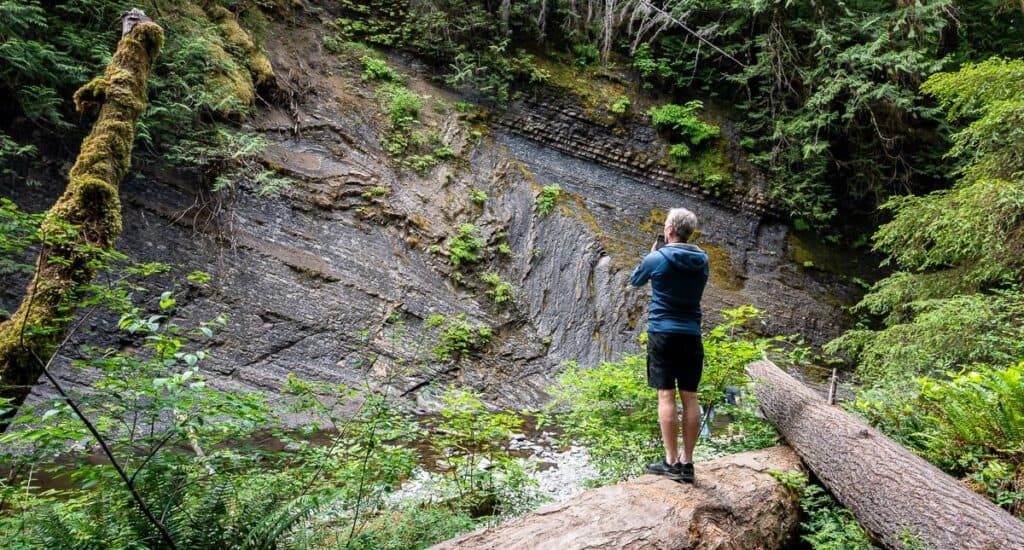 John the geologist admiring all the folding in the rocks just down from the Hole in the Wall
John the geologist admiring all the folding in the rocks just down from the Hole in the Wall
What is the Hole in the Wall?
The Hole in the Wall is just that – a large hole carved in the rock where a water pipe once was. The pipe at the Hole in the Wall was originally part of Port Alberni’s water supply system. It took water from Roger’s Creek and carried it to the town.
Apparently if you go looking in the forest, you might be able to find some of the old wooden stave pipes that carried the water. If you’re up for some exploring you can connect with the Rogers Creek Falls trail downstream – just 10 minutes away and discover an even more beautiful waterfall.
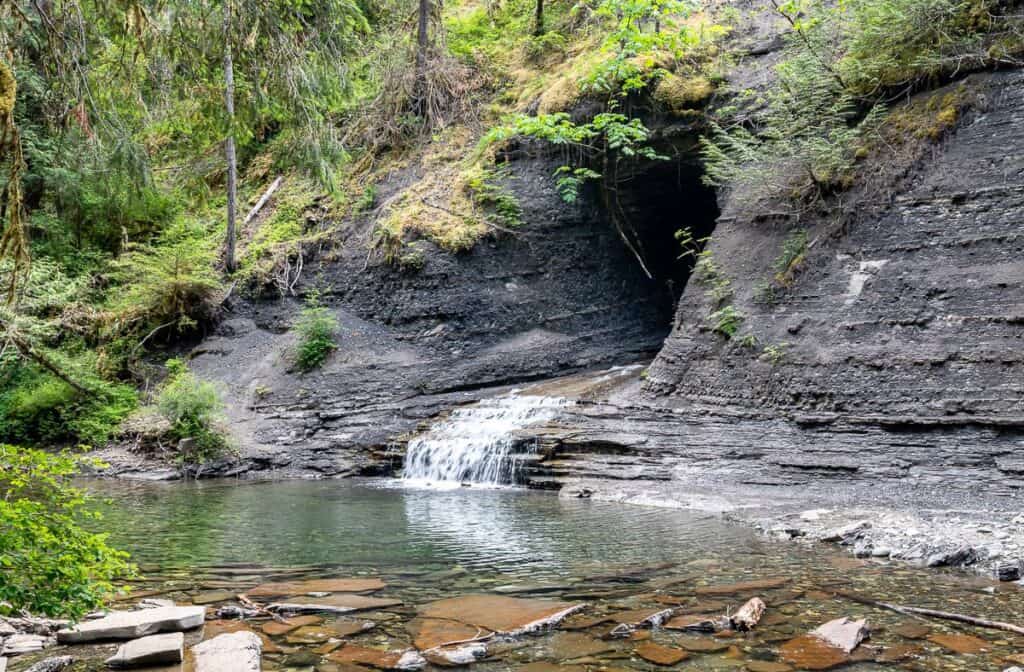 Side view of the Hole in the Wall
Side view of the Hole in the Wall
What to bring on the hike to the Hole in the Wall
Even on short, easy hikes I carry the 10 essentials – just in case something goes wrong.
Pack a pair of water shoes to wade in the creek and a picnic lunch to enjoy in the cool of a big tree down by the water.
I like the Katadyn BeFree 1L microfilter where you simply dip the bottle into a stream, lake or river and start drinking. It collapses when not in use and frees up space. I also pack Aquatabs for purifying water, though you have to wait 30 minutes before you can drink the water. They weigh nothing and take up almost no room.
For socks I’m a big fan of Darn Tough. Personally, I always go with the ultralightweight socks as I have problem feet and don’t like any cushioning.
And if you’re like me when you travel, you’re always taking pictures and videos – and checking maps and emails. If you want to quickly recharge your phone, the Anker Portable Quick Charger will do the trick.
More things to do close to Port Alberni
Apart from the two other nearby waterfall hikes and the one lookout hike, I’d suggest a visit to Cathedral Grove to see the giant trees (ideally at off times), and a trip to see the Sproat Lake petroglyphs.
I highly recommend the Wildflower Café for lunch. Portions are big.
For a detailed list of places to stay, things to do and where to eat, visit Alberni Valley Tourism.
More hikes on Vancouver Island You’ll Enjoy
Click on the photo to bookmark to your Pinterest boards.
